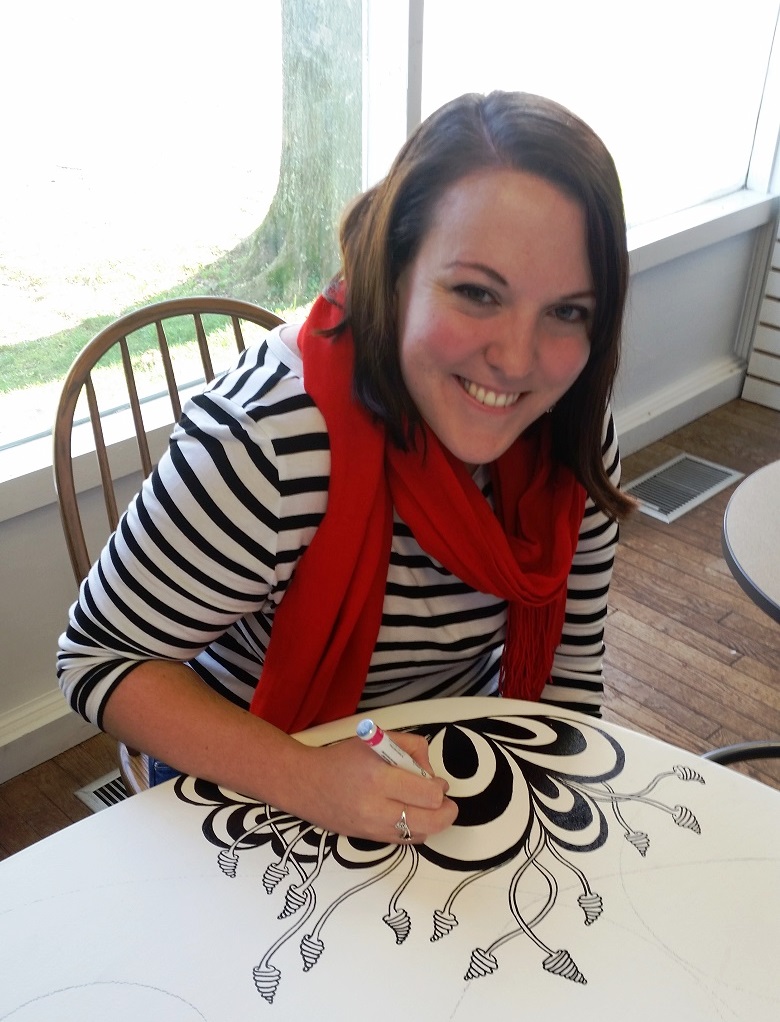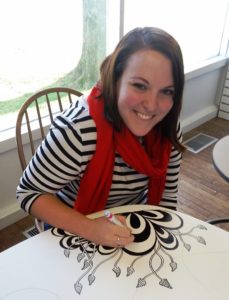This is part of a series of Session Notes from grantees who have received Professional Development grants from the Office of Commonwealth Libraries. Each grantee will share their professional development experience and include tips and other resources from the workshop or class. Grantees had their choice of an article for the Compendium, a webinar or a podcast. This project was made possible by the Institute of Museum and Library Services.
The wide world of maker spaces and STE(A)M learning in public and school libraries can be overwhelming for those new to the maker universe. As the demand grows for libraries and schools to provide maker spaces for their patrons and students, the task of deciding what to include in the space, if a designated space is possible, within a limited budget, can be very daunting. This is especially the case when you have never seen a 3D printer in action, put together a circuit, programmed a robot, learned computer coding, or dabbled in engineering. These things were not part of the standard curriculum when most of us were in school.
It is awe-inspiring even for those with experience in maker spaces since there are thousands of new products and learning tools coming out on the market each month. It’s hard to decide what would work best for your patron base or students. I have found that the best way to learn about makerspace tools, gadgets, and toys is to get hands on experience. It is not just children who learn through play. Adults too can get a better grasp on the world around them by engaging in new experiences and environments.
I had the chance this summer to attend a Makerspace Boot Camp in Ellenville, NY in the Catskill Mountains, outside of New York City along with other public librarians, school librarians, and k-12 teachers. The camp was run by Shannon Mersand and Sheri McNair of the School Library Media Specialists of Southeastern New York (SLMSSENY). This 3 day immersive conference allowed us to learn and explore 25 maker style activities and more in 5 hands on playgrounds that included such themes as robotics/robots, coding, circuitry, engineering and fabrication. Each day from 8 AM to 9 PM at night was full of insightful information. We were taught by doing, not by being talked at. The first exercise they had us do was to create a light-up name tag. There was no instruction, just materials (paper, pencils, battery, LED light, clear name badge holder, and markers). We had to figure it out on our own. It was a great icebreaker as well as awakened our problem solving skills.
our own. It was a great icebreaker as well as awakened our problem solving skills.
Each day we had two 2.5 hour long playground sessions, two information sessions, and then a 1.5 hour long workshop on either design challenges or upcycling. Below is a list of each playground and information about most of the products we got to “play” with during each session.
Playground 1: Circuitry
Every half hour we worked at a different table with a different product and learned about different activities/programs that the products could be used for programing.
Little Bits
Name: littleBits STEAM Student Set
Made By: little Bits
Website: www.littleBits.com/education
Audience: Ages 8+
Paper Circuitry
Name: Paper Circuits
Website: http://tinkering.exploratorium.edu/paper-circuits
Audience: ages 4+
What it does: Paper Circuits uses copper tape, batteries and LEDs to add lights to projects made from paper.
Bare Conductive
Name: Bare Conductive Flashing Card set
Made by: Bare Conductive Ltd
Website: http://www.bareconductive.com
Audience: Ages 12+
Circuit Maze
Name: Circuit Maze
Made by: ThinkFun
Website: www.thinkfun.com
Audience: 8+
(**I highly recommend this game!)
Sewn Circuits
Name: Sewn Circuits
Website: http://tinkering.exploratorium.edu/sewn-circuits
Ages: ages 6+
Chibitronics
Name: Chibitronics Chibi Lights LED Circuit Stickers STEM Starter Kit
Made by: Chibitronics, PTE LTD.
Website: http://chibitronics.com/
Audience: Ages 13+ (5+ with adult supervision)
Playground 2: Engineering
Every half hour we worked at a different table with a different product and learned about different activities/programs that the products could be used for programing.
Sugru
Name: Sugru Moldable Glue
Made by: FormFormFrom Ltd.
Website: https://sugru.com
Audience: Ages 5+
MakeDO
Name: Makedo Toolkit
Made by: Makedo
Website: https://www.make.do/
Audience: Ages 4+
Add ons: Madedo has a Thingiverse library of free 3D printable files to enhance and extend the Makedo system (https://www.thingiverse.com/Makedo/designs)
MakerStudio
Name: MakerStudio Gears Set
Made by: ThinkFun
Website: www.thinkfun.com
Audience: 8+
K’Nex
Name: K’NEX 70 Model Building Set
Made by: K’NEX
Website: http://www.knex.com
Audience: Ages 6+
Hanz Toys
Name: Hanzblok STEM Inventor Lab
Made by: Hanz Toys
Website: www.hanztoys.com
Audience: Ages 5+
Goldie Blox
Name: GoldieBLox Craft-struction Box
Made by: GoldieBlox
Website: http://www.goldieblox.com
Audience: Ages 6+
Playground 3: Fabrication with TECH
Every half hour we worked at a different table with a different product and learned about different activities/programs that the products could be used for programing.
Onion
Name: Onion Omega with Mini Dock
Made by: Onion Corporation
Website: https://store.onion.io/products/omega-dock
Audience: Ages 16+
Sketchup
- 3D modelling program that you can install on your computer. There are two versions of Sketchup available, Sketchup Make, which is free for education institutions, and Sketchup Pro.
TinkerCad
- An easy to use, FREE, browser based 3D design tool that allows users to create 3D renderings by manipulating pre-designed shapes.
Hyperduino
Name: HyperDuino
Made by: 1010 Technologies
Website: http://hyperduino.com/
Audience: Ages 7+
Kano
Name: Kano Computer Kit
Made by: Kano
Website: http://kano.me/
Audience: Ages 6+
Makey Makey Classic
Name: Makey Makey Classic
Made by: Joylabz, Inc.
Website: http://makeymakey.com/
Audience: Ages 8 and Up
Makey Makey Go
Name: Makey Makey Go
Made by: Joylabz, Inc.
Website: http://makeymakey.com/
Audience: Ages 8 and Up
(**Nice, but the Classic does a lot more!)
Scribbler 3D Pen
Name: Scribbler 3D Pen
Made by: Scibbler
Website: http://www.scibbler3dpen.com/
Audience: Ages 8 and Up (with adult supervision)
Playground 4: Coding
Every half hour we worked at a different table with a different product and learned about different activities/programs that the products could be used for programing.
Apps
Hopscotch (http://www.gethopscotch.com/)
Made with Code (http://www.madewithcode.com/)
Game Salad (http://www.gamesalad.com)
Coding Websites
Scratch (https://scratch.mit.edu/)
Hour of Code (http://hourofcode.com)
Tynker (https:///www.tynker.com/)
MIT App Inventor (http://appinventor.mit.edu/explore/)
Sphero
Name: Sphero SPRK Edition
Made by: Sphero, Inc.
Website: http://www.sphero.com/sphero-sprk
Audience: Ages 5+
Ozobot
Name: Ozobot Bit
Made by: Evollve, Inc.
Website: http://ozobot.com/
Audience: Ages 8+
Dash & Dot
Name: Dash and Dot Pack
Made by: Wonder Workshop
Website: https://www.makewonder.com
Audience: Ages 5+
Puzzlets
Name: Puzzlets Starter Kit
Made by: Digital Dream Labs, LLC
Website: https://www.digitallldreamslabs.com/
Audience: Ages 6+
(**Fantastic and very addicting, event for adults!)
Playground 5: Robots and Robotics
Every half hour we worked at a different table with a different product and learned about different activities/programs that the products could be used for programing.
K’Nex Discover Control Set
Name: K’NEX Discover Control Set
Made by: K’NEX
Website: http://www.knex.com
Audience: Ages 6+
Lego EV3
Name: LEGO MINDSTORMS Education EV3 Core Set
Made by: LEGO
Website: www.LEGOEducation.com
Audience: Ages 10+ (younger if tech savvy)
Vex
Name: VEX IQ Super Kit
Made by: VEX Robotics
Website: http://www.vexrobotics.com/
Audience: Ages 8+
Edison
Name: Edison
Made by: Microbric
Website: https://meetedison.com/
Audience: Ages 5+
At the information sessions we learned what is making and the educational theories behind it, funding options, and how to make space for your maker space in whatever amount of space you have available. The design challenges and upcycling workshops gave us great ideas for team building activities for our maker programming and summer camps back at our libraries/schools and ideas for how to make use of all those recyclable materials lying around the library. The Makerspace Boot Camp was overall a great chance to get to know librarians and teachers from a wide range of educational settings. Stories of what has worked and not worked were swapped, connections made, and a melting pot of ideas was created. The School Library Media Specialists of Southeastern New York (www.slmsseny.org) will be hosting the Makerspace Boot Camp again next summer and I highly recommend you go!


